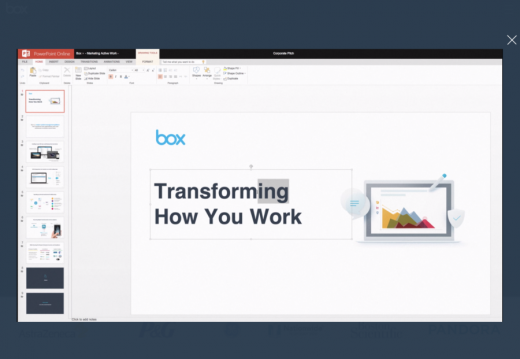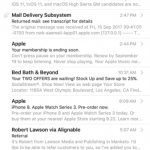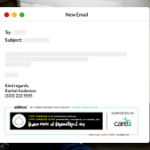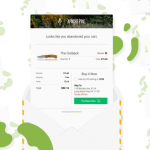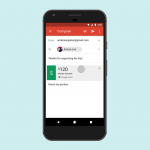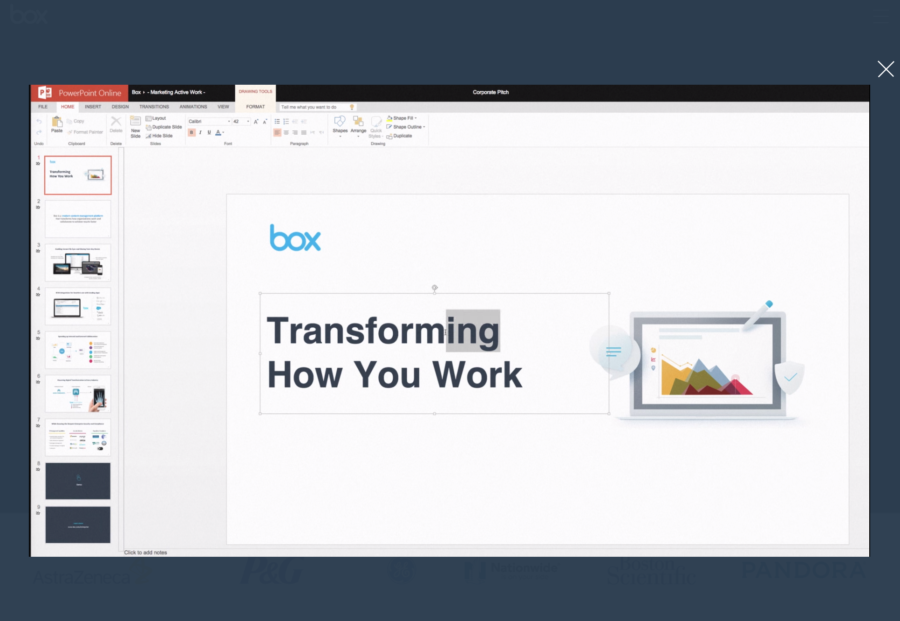Demand Generation Strategy in 2017 – What You Need to Know!
— December 14, 2016

Flashback: it’s 1989. Dusk is falling and an Iowa farmer is staring out over his fields, reflecting upon his situation. It all seems normal until … he starts hearing voices.
“If you build it, they will come.”
Yes, I’m recalling the pivotal scene from the hit movie “Field of Dreams.” So, what does Kevin Costner have to do with a demand generation strategy?
You’re correct, not a damn thing. However, those angels in the outfield perfectly captured the heart of most B2B leadership. We think that if we create something of value the product will sell itself again and again.
Those of us working in demand generation know that’s the furthest thing from the truth. Building products is only half of the battle, B2B companies need to invest in demand generation programs to reliably attract and introduce a qualified audience to your offering.
And if you knock your demand generation strategy out of the park, the ghosts of baseball legends might even opt into your pipeline.
Demand generation is, well, to generate demand for your product or service in order to drive more business. Some confuse this with lead generation, the strategy for initiating consumer interest or inquiry into your business.
Both marketing strategies go together and often overlap. For example, sponsored research will both create demand and leads. Therefore, it’s a part of both strategies.
A demand generation strategy in 2017 is what a brand does to get attention and why consumers engage while having not yet tried the product or service. Lead generation is the second half of this situation and is concerned with how a brand capitalizes upon this worthy attention.
Read on to learn how to craft a comprehensive demand generation strategy. First, we’ll look at key metrics for defining success. Next, we’ll examine key tactics with examples from leading companies like Pardot, Salesforce, Hubspot and more.
By the end, you’ll be confident in your ability to create a variety of effective demand generation campaigns across a multichannel strategy.
Grab your mitt and let’s play ball!
Starting a Demand Generation Strategy
To do well, we should always start with the end in mind. This means defining success within the demand generation strategy. How do we assess the leads we’ve achieved as worthwhile, wasted or someplace in between? I’ll show you.
Because demand generation is an ongoing process that interweaves with every stage of the customer journey, it’s important to understand that demand generation tactics must reach across every stage.

(Source)
According to a recent Hubspot survey, 74% of companies that don’t exceed revenue goals are ignorant of the number of their visitors, leads, MQLs or sales opportunities.
No surprise here, shooting in the dark is asking to fail. Before you can target effectively, you have to know who you’re working with. What type of demand generation tactics you employ will address areas in the customer journey needing direct attention.
Sales Metrics Overviews for Demand Generation
Email Subscriber: Email subscribers are a dime a dozen, which is hard to admit when we consider the effort we put into building email lists. Sad truth, most who agree to receive a newsletter are not leads, only prospects.
Segmentation ensures you can make email most relevant to your users. Try to segment leads from prospects by behaviors such as signup date, specific links or channels for signup, clickthroughs that don’t end in conversions and unresponsive users. Making emails easily shareable (and asking for shares within content) is a great way to increase demand while assessing lead quality.
Marketing Qualified Lead (MQL): Marketing qualified leads have expressed interest in your product or service and are no longer just prospects.
To be an MQL, the lead must meet the standards determined by your company. What constitutes an MQL will vary, so sales and marketing must agree upon their terminology and definition across all the touchpoints. What roles or job titles qualify leads? What types of industries? Company sizes?
Focusing on fit is a great way to go. For example, the CMO of a financial company with 5,000-10,000 employees is likely a great lead to target for your streamlining SaaS product. Someone who follows you on social media, but isn’t on LinkedIn, maybe not.
Be sure to attend to interest levels as well. If a prospect has downloaded numerous ebooks, engaged across social and is attending to the newsletter – that’s an MQL. However, someone who’s only peeked at your blog once and signed up for the newsletter may not be a true MQL.
If you’re not finding your leads after defining your ideal fit and interest, it’s time to reconvene the sales and marketing teams to either rehash their shared vocabulary or retool your content/engagement strategy.
Sales Qualified Lead (SQL): Sales qualified leads are gold once they’ve displayed buying behavior and been vetted. You can determine sales-worthiness by any number of acronyms, such as BANT: Budget, Authority, Need and Timeframe. Basically, is the lead ready, willing, able and solvent? Sales reps should be spending time with those most likely to buy your product or service. A quick call can qualify or disqualify.
Sales Opportunity: Also called sales qualified leads, sales opportunities are qualified as potential buyers because of high value and a high probability of closing. These individuals have displayed a high level of interest, fit or need for your product or service.
Opportunity Won: Honest and valuable relations lead to sales. But just because you’ve won the opportunity, doesn’t mean it’s time to close up shop. Retaining customers means sending email newsletters, loyalty program offers, discounts and event invites. Continuing engagement can translate into upsells, referrals and valuable feedback from surveys.
Why Should You Start Lead Scoring?

(Source)
Lead scoring helps you target the best leads already in your funnel and optimize your demand generation strategy. Job position, number of social media followers, company size and engagement level are essential criteria for ranking leads. You’ll want to spend your resources talking with decision makers, so hand your sales team a hierarchy of leads to pursue instead of opting for the A-Z technique.
With lead scoring in place, sales teams touch upon the hottest leads for improved sales, increased productivity and higher morale. Lead scoring technologies are plentiful, from Marketo, Eloqua, Hubspot, IKO-System and more.
Lead Nurturing

(Source)
79% of all marketing leads never convert into sales, says Hubspot. The reason? A lack of lead nurturing.
If you’re actively developing and maintaining relationships with prospects through every stage of the sales funnel, you’re already a lead nurturer.
Guide leads along the buyer’s journey in a way that seems intuitive, so when users wonder about a particular aspect of your brand – poof! – it appears around the next corner like magic.
Lead activity reveals how close prospects are to a buying decision. Website visits, retweets and downloads are the markers of a well-nurtured lead. As we’ll discuss soon, a multichannel strategy is a must for proper lead nurturing.
Leads arrive in one of these four types, which can obviously change:
Good Fit and Interested: Winning! These leads are highly engaged, a good fit and warrant immediate follow-up from the sales team. Studies show that under 5 minutes is best and under 24 hours is passable.
Good Fit and Less Interested: Second best, these leads don’t show much interest,yet are a good fit for your brand. Maybe they downloaded a piece of content or signed up for a newsletter, but they still need to be nurtured further.
Not a Good Fit, but Interested: Subscribing to your newsletter or downloading an ebook doesn’t make someone your ideal customer. That said, it’s worth having a sales rep do a low-cost follow-up with such individuals to see if they may be in line for a quick, though unusual, sale.
No Fit and No Interest: These leads are best tossed from the communication stream and can only confuse you.
Campaigns and Tactics for Demand Generation
Reaching your ideal leads requires a far-reaching multichannel approach. Why? Because your leads are all at different stages of the buying journey. Try your hand at the five following campaigns to reach consumers at the right time and place.
#1 Display Retargeting – Pardot
(Source)
“80% of the traffic on your web site is not from people who will necessarily buy anything. The challenge is engaging with those visitors who are interested in your product but are still in the evaluation process.”
–Chris Golec, CEO of Demandbase
Most sales happen after the seventh try, right? Well, same goes for the internet.
Retargeting is a cost-effective way to keep your brand in front of decision makers throughout what is a usually a lengthy buying cycle. By repeatedly positioning your brand in front of qualified leads, you can expect your revenues to increase.
Pardot’s retargeting efforts speak directly to the executive looking to boost their sales pipeline. The use of the alluring word “Accelerate” nabs our attention and continues on to recommend the brand’s marketing automation solution. The messaging here is pinpoint and actionable, especially when we look to the bright and optimistic “View Demo” CTA. The eye tracks right here and the top-right managed display placement is well executed.
David Raab of Customer Experience Matrix shares insights on demand and marketing automation softwares here.
#2 Sponsored Research – Hubspot

3,233,457. That’s how many blog posts have been written today.
If you’re serious about deserving attention for your content marketing efforts, it’s time to consider and budget for content that will differentiate your brand. Best case, you position yourself as thought leaders.
That means next-level evergreen content or sponsored research setting you apart from the competition.
Hubspot takes this idea to the next level with their Hubspot Research webpage. Having conducted and released so much valuable content through the years, the company decided to consolidate their assets and take demand and lead generation to new heights. Subscribers here are better segmented and more easily turned into buyers than off the main site.
Carlos Hidalgo of Annuitas shares some insights gleaned from CMI’s 2017 B2B Content Marketing Survey:
- Only 22% think their organization’s approach to content marketing is very or extremely successful.
- Only 28% of respondents think their organizations are sophisticated/mature with content marketing efforts.
- Only 34% think their organizations are very effective at meeting their content marketing goals.
This means you have a wide open lane to excel with killer content!
#3 Video Advertising – Box
“To maintain a dialogue with buyers and move buyers along as much as possible before they interact with sales, you’re going to need to cover content that helps them at least prepare for a buying decision.”
–Adam Needles, Annuitas
Video is a quick, retentive, and interesting way to share information about your brand. It’s also great advertising for engaged, bottom-funnel leads. You’ll get an SEO boost by tagging videos, better-converting landing pages, longer site times and content ideal for social media sharing.
This video from file sharing app Box shows viewers exactly the benefits awaiting them at use. The company uses a bright voiceover to illustrate what the value can be to their organization, highlighting all the features in a bulleted-list format from one screen to the next. This video makes it easy for prospective clients to buyers with valuable information – fast.
#4 Partner Webinars – Wordstream and Moz

(Source)
With all the values we just mentioned in video ads, webinars are beacons of demand generation. Why? Because people always crave the latest insights, especially from celebrity figures.
This Wordstream and Moz partnership exemplifies all the good that comes from demand generation via webinars. You can ally with industry influencers, boost brand awareness for top-funnel leads, differentiate yourself for bottom-funnel leads and overall showcase your brand as top-notch. Come out ready to share your best ideas and prepare to win lots of leads for the effort.
#5 Syndicated Content

Ever feel like you keep running across the same piece of content and the same ideas? You’re not crazy, it’s just syndicated content hard at work. Yes, partnering with third-party media channels to distribute your content can bring you loads of brand awareness.
I swear, this Salesforce blog post is everywhere these days! I ran a search and found their ideas had swarmed around the SERP rankings – and good for them! By distributing their ideas readily, they catch the linkbacks to their landing pages or homesite blog content. Even if other brands bite their content, better for Salesforce because they’re now seen as thought leaders even more. Guaranteed that Salesforce is tracking the leads that arrive and segmenting their users by engagement and channels. This demand generation tactic is great for building awareness but can also be used with bottom-funnel content to trigger sales meetings.
It’s the bottom of the 9th…
Marketers, to win the game of demand generation we must remember that ‘Build it and they will come thinking doesn’t work’. It’s time to invest in a real demand generation strategy, one that focuses on going the long haul with customers, not just new leads. Your brand needs to play strong all nine innings to win.
Selecting the right content is what allows campaign success, so find content that’s performed well and if need be, repurpose it. Choose evergreen or timely pieces to share. Create new content to fit the current pain points of your target persona.
What will resonate is what drives demand. Sharing the messaging through the appropriate channels is the next step, so think of syndicated content, videos, webinars or display ads for this.
You’ll want to keep track of your metrics, as always, to make sure you’re keeping your eye on the ball. If you ever doubt your demand generation tactics, just ask yourself:
What would I want from a brand like mine?
How would I want it pitched to me?
Business & Finance Articles on Business 2 Community
(40)

